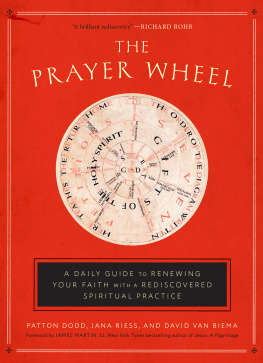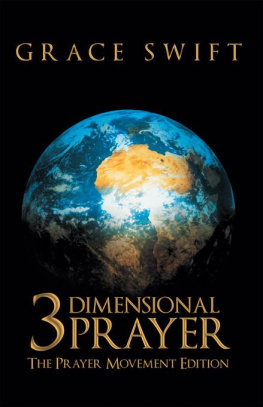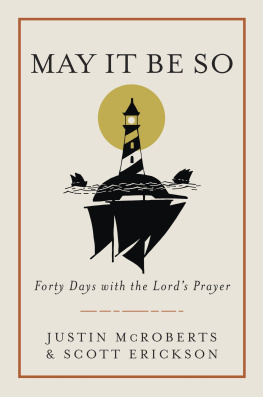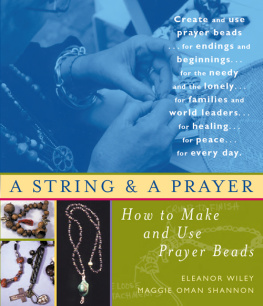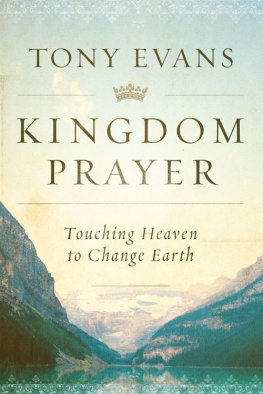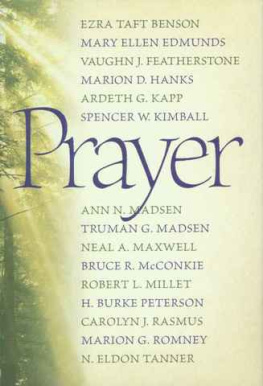ABOUT THE AUTHORS
PATTON DODD is a writer and editor whose work has appeared in the Wall Street Journal, the Washington Post, TheAtlantic.com , CNN.com , the Financial Times, Newsweek, Slate, Christianity Today, Shambhala Sun, and more. He has also appeared on a range of television and radio shows, including Hannity and the Laura Ingraham Show as well as on ESPN Radio and National Public Radio. He has served as editor of several of the largest religion news and commentary websites, including Beliefnet, Patheos, and OnFaith. Patton is the editor or coeditor of several books, including a memoir, My Faith So Far: A Story of Conversion and Confusion . He holds a PhD in religious studies from Boston University.
JANA RIESS holds degrees in religion from Wellesley College, Princeton Theological Seminary, and Columbia University. She is a senior columnist for Religion News Service and speaks often to the media about issues pertaining to religion in America. She is the author, coauthor, or editor of many books, including Flunking Sainthood: A Year of Breaking the Sabbath, Forgetting to Pray, and Still Loving My Neighbor, named one of the top ten religion books of the year by Publishers Weekly in 2011.
DAVID VAN BIEMA was head religion writer at Time from 1999 to 2009. He wrote twenty-five cover stories for the magazine, as well as covers for Life magazine, People, and the Washington Post Magazine . His recent work has appeared in Time, the Washington Post, TheAtlantic.com , the Religion News Service, and other venues. He has won numerous religion newswriting prizes. His interviewees have included the Dalai Lama, the Archbishop of Canterbury (Rowan Williams at the time), Rick Warren, and Thich Nhat Hanh. He is the author of the book Mother Teresa: The Life and Works of a Modern Saint.
NEXT STEPS
W e began this book with a quotation from Jeremiah: Stand at the crossroads, and look, and ask for the ancient paths, where the good way lies; and walk in it, and find rest for your souls (6:16). Weve seen that the Prayer Wheel is one such proven path, forged in a time very different from ours, yet speaking to the same questions and uncertainties believers face today: How can I know Gods will? Where do I fit into the kingdom? And how can I grow closer to God?
We hope that this introduction to a lost spiritual practice has refreshed your faith and brought to your conversations with God a new range and depth. We also hope that by now you are comfortable enough with the basic architecture and content of the Prayer Wheel that you will want to experiment with it and make it your own. Like earnest pilgrims of earlier times, you can take the tools and traditions, and bring your own reflection and creativity to bear.
Consider creating a diagram of the Prayer Wheel in which the individual rings spin independently, so that every time you spin the wheel you come up with a different prayer combination. You might want to tell your friends about what the wheel is teaching you, and then pray it together. Or you could simply start back at the beginning of this book and do the seven weeks of prayer again, this time with additional clarity as the individual pieces click into place and the wheel makes sense as a unit.
Whatever your approach, were confident that as you pray the wheel youll find fresh insights and renewed faith. The Prayer Wheel has many paths, but all of them lead home.
NOTES
The abbots high praise for theological diagrams is found in Jeffrey F. Hamburger, Haec Figura Demonstrat: Diagrams in an Early Thirteenth-Century Parisian Copy of Lothar de Segnis De Missarum Mysteriis, Wiener Jahrbuch fr Kunstgeschichte 58 (2009)
Mother Teresas quote about prayer is from No Greater Love (Novato, CA: New World Library, 1997)
The God alone could teach us excerpt is from Tertullian, as quoted in Roy Hammerling, The Lords Prayer in the Early Church: The Pearl of Great Price (New York: Palgrave Macmillan, 2010)
The Peter Chrysologus statement about the angels standing in awe of prayer is from Hammerlings book (4).
The description of Ramon Llulls over-the-top wheel construction is from Michael W. Evans, The Geometry of the Mind, Architectural Association Quarterly 12, no. 4 (1980)
Week 1, Connecting This Path with the Next: At first glance, theres considerable overlap among the gifts of wisdom, understanding, counsel, and knowledge. One of the best resources to help you distinguish among them is Thomas Keating, Fruits and Gifts of the Holy Spirit (Snowmass, CO: Lantern Books, 2000).
Week 7, Day 5: The different Greek words for poor are explained in William Barclay, The Beatitudes and the Lords Prayer for Everyman (New York: Harper & Row, 1963), 2022. Barclay notes that the difference between penes and ptochos is between the man who is poor and frugal and the man who is destitute and a beggar.
To express gratitude: For more on Jesus feeding of the five thousand in John and the scenes connection to the Passover, see N. T. Wright, John for Everyone, Part I: Chapters 110 (London: SPCK, 2002)
Augustines ideas about the Lords Prayer can be found in Thomas Aquinas, The Three Greatest Prayers: Commentaries on the Lords Prayer, the Hail Mary, and the Apostles Creed (Manchester, NH: Sophia Institute Press, 1990)
In the gifts of the Holy Spirit, the original Hebrew text from Isaiah 11 has only six enumerated gifts. Piety is missing, and fear of the Lord appears twice. When the Old Testament was translated into Greek in the second century BCE, the translators chose to render the first mention of fear of the Lord as piety, bringing the number of gifts to seven. See Mitch Finley, The Seven Gifts of the Holy Spirit (Liguori, MO: Liguori Publications, 2001)
Paschasius Radbertuss formulation of the Seven Good Things is described briefly in Ulrich Rehms book Bebilderte Vaterunser- Erklrungen des Mittelalters (Baden-Baden, Germany: Valentin Koerner, 1994)
For N. T. Wrights rendition of the Beatitudes as wonderful news! see Matthew for Everyone, Part I: Chapters 115 (London: SPCK, 2002)
Richard Fosters notion of the Beatitudes as a kind of Jubilee inversion is found in his book Streams of Living Water: Celebrating the Great Tradition of Christian Faith (San Francisco: HarperSanFrancisco, 1998)
For readers interested in the composition of this particular book: It was David Van Biema who first encountered the Liesborn Prayer Wheel and conceived the idea for a book. In the writing he worked almost exclusively on the explanatory and history sections. All three authors collaborated to define the concept for the book, with further aid from the publisher. Jana Riess and Patton Dodd wrote the prayers that make up the majority of the content.
ACKNOWLEDGMENTS
T he authors would like to thank Sandra Hindman and Les Enluminures for first alerting David to the existence of the Liesborn Gospels book (via the invaluable A. Larry Ross) and the hidden treasure it harbored inside: the Prayer Wheel. In particular, were grateful to Sandra for allowing us to use the Latin image of the wheel so readers can see it in its original beauty. We also thank illustrator Darrel Frost for his elegant modern renderings of the wheel, streamlining it for devotional use today. Those renderings informed the designers illustrations in this book.
We consulted many experts in the fields of medieval history, religion, and art. We are especially grateful to Dr. Lauren Mancia, whose early enthusiasm and continuing expertise were crucial to us. Dr. Ulrich Rehm, whose dissertation is one of the only full-length treatments of medieval prayer wheels, pointed us in helpful directions. Dr. Roy Hammerling aided us both through his book on the Lords Prayer and with his generous advice and support. Roy in turn brought in several of his colleagues who were of aid. Father James Martin helped us understand the wheels potential for believers today, and Brian Finnerty offered vital observations. Dr. Jeffrey Hamburger helped us understand the importance of geometric figures and the wheels development through history. Clark Strand saw the wheel differently. Laurence Bond was our superb research assistant. John Lyon, Julie Murray, and Tiffany Vann Sprecher also assisted us in various phases of research.
Next page
